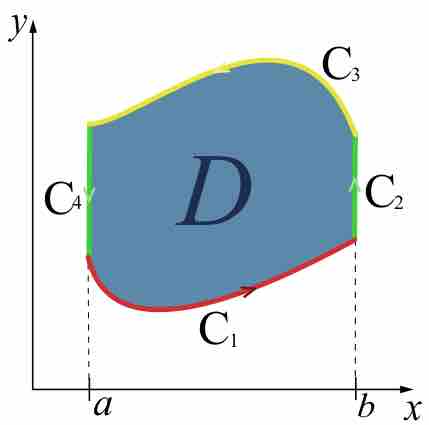Green's theorem gives the relationship between a line integral around a simple closed curve
Let
where the path of integration along
In physics, Green's theorem is mostly used to solve two-dimensional flow integrals, stating that the sum of fluid outflows at any point inside a volume is equal to the total outflow summed about an enclosing area. In plane geometry and area surveying, Green's theorem can be used to determine the area and centroid of plane figures solely by integrating over the perimeter.
Green's theorem is a special case of the Kelvin–Stokes theorem, when applied to a region in the
